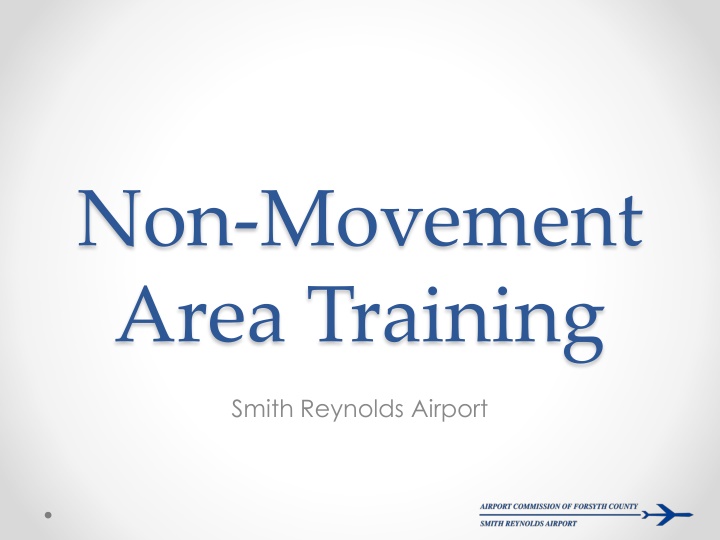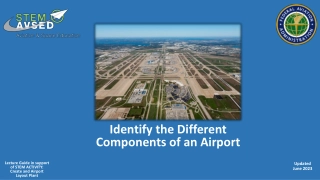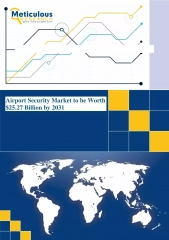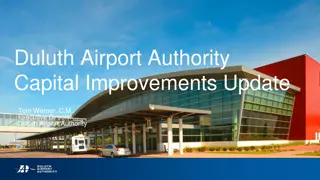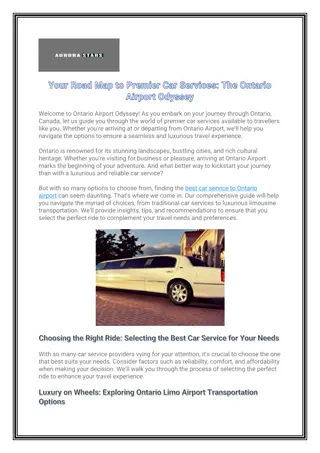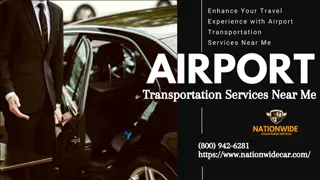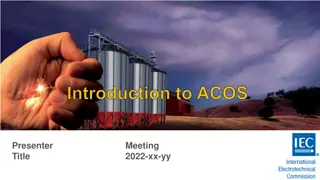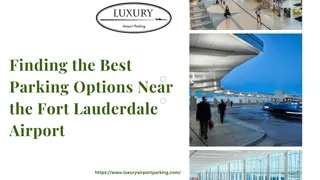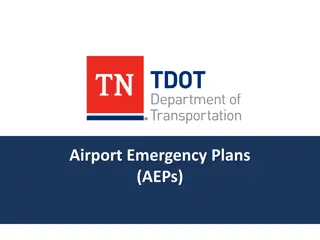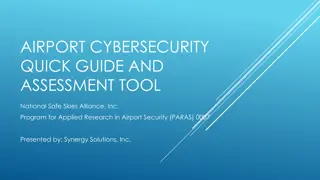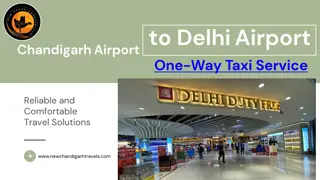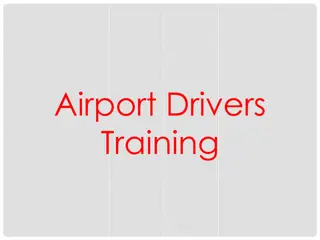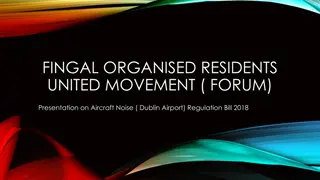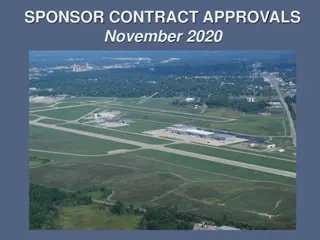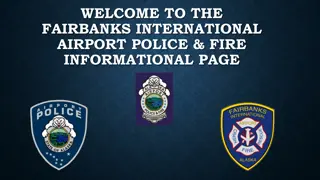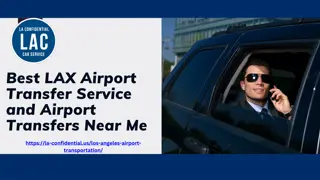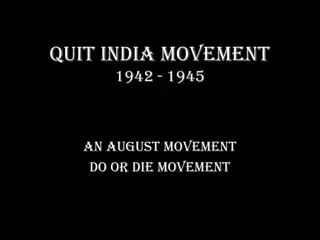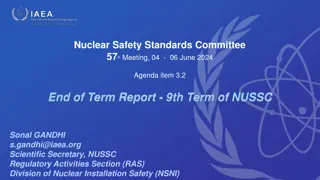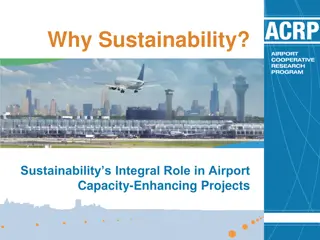Establishing Safety Standards in Non-Movement Areas at Smith Reynolds Airport
This guide outlines the purpose, definitions, rules, and safety measures for operating vehicles in non-movement areas at Smith Reynolds Airport. It emphasizes standardized ground movement practices to ensure the safety of airport patrons, reduce the risk of injury, and maintain a high level of safety on airport premises. Key topics covered include the definition of non-movement areas, the boundary between movement and non-movement areas, handling foreign object debris, and basic rules for driving in non-movement areas. Compliance with regulations and adherence to safety protocols are paramount for all operators in these areas.
Uploaded on Jul 11, 2024 | 22 Views
Download Presentation

Please find below an Image/Link to download the presentation.
The content on the website is provided AS IS for your information and personal use only. It may not be sold, licensed, or shared on other websites without obtaining consent from the author.If you encounter any issues during the download, it is possible that the publisher has removed the file from their server.
You are allowed to download the files provided on this website for personal or commercial use, subject to the condition that they are used lawfully. All files are the property of their respective owners.
The content on the website is provided AS IS for your information and personal use only. It may not be sold, licensed, or shared on other websites without obtaining consent from the author.
E N D
Presentation Transcript
Non-Movement Area Training Smith Reynolds Airport
Contents 1. Purpose 2. Definitions 3. Non-Movement Area Boundary 4. Foreign Object Debris 5. Basic Rules for Driving in the Non-Movement Area 6. Safety in the Non-Movement Area 7. Vehicle Parking 8. Phone Numbers
1. Purpose To establish standardized ground movement of vehicles on airport property To maintain highest level of safety on airport premises To reduce the risk of injury to airport patrons
2. Definitions Runway: A defined rectangular surface on an airport prepared or suitable for aircraft landing and take off Taxiway: A defined path established for the taxiing of aircraft from one part of an airport to another Movement Area: All paved surfaces where Air Traffic Controller (ATC) permission is required before entering. o Example: runways, taxiways. Non-Movement Area: Area of an airport where ATC permission is NOT required for ground vehicle operation. o Example: Apron/ramp, ground vehicle parking, aircraft gates, taxilanes
3. Non-Movement Area Boundary The boundary between non-movement area and movement area NEVER cross this line unless you have completed the Movement Area Training Module and have permission from ATC
4. Foreign Object Debris Foreign Object Debris (FOD) is any object found on taxiways, runways, or the apron that has the potential to cause damage to aircraft All FOD must be removed Each airport tenant is responsible for picking up FOD in their leased area If you see FOD in the Non-Movement Area you are driving on, it is your responsibility to stop, pick it up, and dispose of it properly If you see FOD that you are unable to collect yourself, contact the Smith Reynolds Airport Operations
5a. Basic Rules for Driving in the Non-Movement Area Aircraft have the right of way! Yield to emergency vehicles Wear your ID Badge Follow proper procedure at vehicle gates o Make sure gate closes completely before leaving it, to prevent unauthorized personnel from entering the airport premises Obey 15 MPH speed limit
5b. Basic Rules for Driving in the Non-Movement Area Be aware of low visibility vehicle restrictions Follow proper procedure for vehicle escorts o You must not leave any vehicle you are escorting unattended Watch for passengers on the apron Never leave your vehicle unattended in active areas Comply with North Carolina State driving Laws
6a. Safety in the Non- Movement Area Beware of jet blast o Jet engines produce a blast of hot air that can burn you, knock you over, or even turn over your car o Stay clear of jet engine intakes, many people have been killed or severely injured as a result of being sucking into an operating engine. Beware of prop wash o Stay clear of spinning propellers o A spinning propeller is nearly invisible One way to tell if an aircraft s engines are running or about to start is to check for flashing anti-collision lights
6b. Safety in the Non- Movement Area Approach parked aircraft cautiously o Take all necessary precautions to avoid hitting an aircraft Never drive under any portion of an aircraft When in doubt, yield the right of way to other vehicles Beware of driving hazards at night and in bad weather If you are in an accident, report it Stay away from accident sites No smoking on the Apron
7. Vehicle Parking Use parking brakes or wheel chucks Use designated parking spots Maintain a five-foot clear zone
8. Phone Numbers Airfield emergency: (336) 727-2222 Airport Administration: (336) 767-6361
